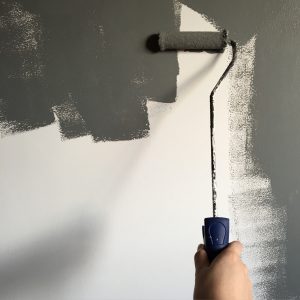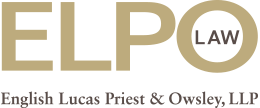Blog
Construction firms can avoid lead paint problems with sound legal advice
by Mandy Hicks
By Sarah Jarboe, Partner
English, Lucas, Priest and Owsley LLP
 Last month, news outlets reported that HGTV stars Chip and Joanna Gaines’ company would pay a $40,000 fine for violating the Toxic Substances Control Act (TSCA) Lead Renovation, Repair and Painting Rule (“RRP Rule”) on work sites. The fines are a result of an Environmental Protection Agency (“EPA”) review of the HGTV show, Fixer Upper, which showed workers on their renovation sites violating EPA regulations.
Last month, news outlets reported that HGTV stars Chip and Joanna Gaines’ company would pay a $40,000 fine for violating the Toxic Substances Control Act (TSCA) Lead Renovation, Repair and Painting Rule (“RRP Rule”) on work sites. The fines are a result of an Environmental Protection Agency (“EPA”) review of the HGTV show, Fixer Upper, which showed workers on their renovation sites violating EPA regulations.
Magnolia Homes, the Gaines’ company, took immediate steps to rectify problems when first contacted by the EPA in 2015, the EPA said in a statement. Beyond the $40,000 fine, Magnolia Homes will spend $160,000 to abate lead paint in homes in Waco, Texas, where the couple and Magnolia Homes are based.
This large expenditure could have been avoided with good legal advice and sound work practices.
EPA requirements are aimed at reducing the risk of lead poisoning, especially in children
Regulation of lead-based paint hazards is required under Title IV of the Toxic Substances Control Act (“TSCA”) and the Residential Lead-Based Paint Hazard Reduction Act of 1992. At the time TSCA was passed into law, more than 3 million children ages 6 and under were suffering from lead poisoning. Lead paint becomes dangerous when it is disturbed, and chipping and peeling lead paint is a danger to curious children who may put it in their mouths. Hazardous lead paint dust poses a similar risk to residents and renovation workers.
Today, it is estimated that about 1.7 million children have elevated levels of lead in their blood; although, it’s hard to confirm how many really have lead poisoning. Many states do not share this information with the Centers for Disease Control, and testing of children is not required. The EPA’s regulations are intended to decrease the number of children with lead poisoning and target properties where children are typically present.
EPA requirements for renovations
Any buildings constructed before 1978, when paint manufacturers were banned from putting lead in paint, are assumed to have lead paint on surfaces. In general, any firms and renovators being paid to renovate residential houses, apartments, and child-occupied facilities such as schools and day-care centers that were built before 1978 and contain a threshold level of lead paint must be trained and certified in lead-safe renovation practices. Certified renovators must comply with work practice standards and EPA notification, recordkeeping, and reporting requirements.
If you are in the construction field, you should be aware of these regulations, particularly if you renovate or restore older homes or facilities that are used by children. The key to preventing air and soil contamination from the renovation project is proper containment of lead paint chips and dust and cleaning the renovation areas.
These rules do not apply to those working on public buildings, bridges or other similar structures. Do-It-Yourselfers working on their own homes are also excused from complying with the regulations.
Real estate disclosure requirements
It’s not just construction firms or renovation operations that need to know the laws and regulations surrounding lead-based paint. Real estate agents, brokers, landlords and property managers have an obligation to make certain disclosures regarding lead-based paint. You can find a listing of some of those responsibilities here.
What you can do to avoid violations

Testing for lead-based paint prior to beginning renovation or restoration projects of buildings older than 1978 can be key to saving money and time in the long run. The EPA’s RRP Rule does not apply where testing shows that areas affected by the renovation contain a minimal amount of lead. Our office can help you navigate this lead-based paint assessment process and then help you meet EPA requirements at every stage of your project.
Not following lead paint laws can be expensive, as the Gaines case shows. I am available to consult with you and your company about lead paint regulations, and help you avoid running afoul of the EPA. Please contact me, attorney Sarah Jarboe, at (270) 781-6500 or sjarboe@elpolaw.com, if I can assist you.
